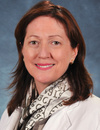Co-Located Conference AgendasCirculating Biomarkers World Congress 2019 | Extracellular Vesicle-based Dx & Rx Summit | Flow Cytometry 2019: Biomarkers & Diagnostics | Liquid Biopsies 2019 | 

Thursday, 28 March 201910:45 |  | Conference Chair Conference Chaiperson Opening Remarks
Lucia Languino, Professor of Cancer Biology, Thomas Jefferson University, United States of America
|
| |
Summit Session Title: Emerging Themes in EV-based Diagnostics and Therapeutics |
| | 11:00 |  | Keynote Presentation Diversity of Extracellular Vesicles to Understand their Diagnostic and Therapeutic Potential
Jan Lötvall, Professor, University of Gothenburg; Founding President of ISEV; Editor-in-Chief, Journal of Extracellular Vesicles, Sweden
This presentation will discuss the diversity of extracellular vesicles, primarily from a clinical perspective. Specifically, the presentation will show the presence of extracellular vesicles in tissues, specifically healthy tissues as well as different types of tumors. Data showing the presence of multiple types of EVs in different types of tissues will be presented, as well as the opportunities of utilizing that knowledge for clinical use. |
| 11:30 |  | Keynote Presentation Exosome Signaling in Brain Development
Hollis Cline, Chair of Neuroscience and Hahn Professor of Neuroscience, The Scripps Research Institute, United States of America
Exosomes are thought to be secreted by all cells in the body and could
to be involved in intercellular communication. I will describe
experiments in which we tested whether neural exosomes regulate the
development of neural circuits and whether exosome-mediated signaling
may be aberrant in in vitro models of a neurodevelopmental disorder
using human induced pluripotent stem cells (hiPSC) and in vivo rodent
models. I will describe results of quantitative proteomic analysis of
exosomes. Together our studies indicate that exosomes have the capacity
to influence neuron and circuit development. |
| 12:00 | Networking Lunch in the Exhibit Hall and Poster Viewing | 12:30 |  | Keynote Presentation Plasma Extracellular Vesicles Sub-fractions For Diagnosis of Cardiovascular Disease
Dominique PV de Kleijn, Professor Experimental Vascular Surgery, Professor Netherlands Heart Institute, University Medical Center Utrecht, The Netherlands, Netherlands
Cardiovascular Disease (CVD) is with the cardiovascular events of Ischemic Heart Disease and Stroke, the number 1 and 2 cause of death in the world and expect to increase especially in Asia.
Ischemic heart disease (IHD) comprises 3 entities: stable coronary artery disease (SCAD), unstable angina (UA) and myocardial infarction (MI). Because IHD is associated with an increased risk of adverse clinical events such as heart failure and death, early recognition of IHD is of utmost importance.
However, to diagnosis IHD is challenging, as many patients present with atypical symptoms. It is known that women have a different symptom sensation than men. Troponins are the main diagnostic tool for detection of MI. Blood biomarkers for SCAD (typically causing stable angina) and UA, however, are not available. These diagnoses frequently require hospital visits/admissions for time-consuming and costly (non)invasive tests.
We use a protein signature measured in 3 different subsets of plasma extracellular vesicle as an accurate source for early diagnosis of SCAD and UA. Diagnosis of ischemic heart disease as well as reproducibility and simplification for microfluidics will be discussed. |
| 13:00 |  EV Isolation from Biofluids EV Isolation from Biofluids
Shannon Pendergrast, Chief Scientific Officer, Ymir Genomics
We will present several novel products and methods for the rapid and effective isolation of biofluid extracellular vesicles (EVs).
| 13:30 |  | Keynote Presentation Exosome Engineering for Delivery of Cytosolic Proteins: Principles and Therapeutic Applications
Chulhee Choi, Professor and Chair, BioMedical Imaging Center, Korea Advanced Institute of Science and Technology (KAIST), President, ILIAS Biologics Incorporated, Korea South
Our group has recently developed an opto-genetically engineered exosome
system, named ‘exosomes for protein loading via optically reversible
protein–protein interaction” (EXPLOR) that can deliver soluble proteins
into the cytosol of target cells via controlled, reversible
protein–protein interactions (PPI). By integrating a reversible PPI
module controlled by specific wavelength of light with the endogenous
process of exosome biogenesis, cargo proteins of our interest can be
loaded into newly generated exosomes. Protein-loaded exosomes were shown
to significantly increase intracellular levels of cargo proteins and
their function in recipient cells in both a time- and dose-dependent
manner. In this presentation, I will introduce the basic principles of
EXPLOR technology and follow-up studies for therapeutic applications
including sepsis. |
| 14:00 | Induced Tissue Regeneration (iTR) Using Extracellular Vesicles
Dana Larocca, VP Discovery Research, AgeX Therapeutics, United States of America
There is a critical unmet medical need for new therapies to treat age-related diseases given the increasing burden of a global demographic shift toward older populations. Extracellular vesicles (EVs) have been demonstrated to be largely responsible for the regenerative effects of stem cells in a variety of animal models of age-associated diseases including cardiovascular diseases. We hypothesize that EVs made by cells from early human development will convey strong regenerative signals because this is when regenerative capacity is at its peak. We used partial differentiation of human pluripotent stem cells to derive a large library of highly scalable and clonally pure embryonic progenitor cell lines. Over 200 progenitor lines were originally established to meet the high demands of cell purity and scalability needed to treat a large aging population. We are now mining this diverse library of cell lines for their ability to provide a scalable source of highly regenerative EVs. We found that embryonic progenitor derived EVs had higher angiogenic activity than adult stem cell derived EVs. Moreover, angiogenic activity was maintained by EVs produced by cells at up to at least 52 population doublings and following bioreactor scale-up. We are currently mapping bioactivity and cargo of EVs derived from a variety of embryonic cell types including endothelial, pericyte, smooth muscle, osteochondral and brown adipocyte progenitors. We anticipate that the resulting library of diverse embryonic EVs will be a valuable resource for developing EV therapies for cardiovascular and other age-related diseases. | 14:30 | Adipose-derived Stem Cell Extracellular Vesicles can be Specifically Tuned for Soft Tissue Repair and Wound Healing
John Ludlow, Executive Director, Regenerative Medicine, Zen-Bio, Inc., United States of America
Our research program is designed to provide critical proof-of-concept data demonstrating manufacturing conditions and wound healing properties of stem cell-derived extracellular vesicles. | 15:00 | The HSP-Accessorized Exosome: Presence in States of Danger, Disease, and Disruption
Michael Graner, Professor, Dept of Neurosurgery, University of Colorado Anschutz School of Medicine, United States of America
Heat shock proteins (HSPs) function as chaperones under both normal and
pathologic conditions. As chaperones they assist in protein folding, in
holding protein complexes for current or future activation, and in the
degradation of senescent proteins for recycling of components and
display for immune surveillance. During stressful situations, HSP
quantities and/or activities are increased as cells and tissues seek
protection from insults. On occasion, these insults can result in the
cell surface display of HSPs, which can then lead to the surface display
of HSPs on exosomes, membrane-enclosed vesicles released
extracellularly after passage thru the endosomal system. HSPs present on
the cell surface or in the extracellular space are regarded as “danger
signals” in an ancient biologic paradigm. HSP-accessorized exosomes may
act as “danger boli”, carrying not only the HSPs, but hundreds of
components of the stressed parental cell, capable of prompting immune
responses, or possibly immune suppression, depending on the status of
the recipient cell. Here we show that exosomes from the blood of
patients suffering from neurologic maladies (cancer, brain injury,
multiple sclerosis) are precipitated by peptides designed to bind HSPs.
The metabolome of such exosomes is distinct from that of blood exosomes
from healthy donors. Such HSP-accessorized exosomes possess inflammatory
properties and may serve as biomarkers in a “liquid biopsy” setting. | 15:30 | Human Liver Stem Cell-derived Nano-EVs – A Broad Platform Technology for Cancer and Regeneration
Daniel Gau, Head of Business Development, Unicyte AG, Germany
Extracellular vesicles and exosomes (EVs), and in particular when derived from stem cells are emerging as a new therapeutic modality in regenerative medicine. Stem cell derived EVs are of high abundance, are not self-replicating, are not immunogenic, own a tissue specific targeting capability and thus address hurdles of stem cells for translation into indications with large patient impact. With more than 10 years research in the field, Unicyte has developed a strong therapeutic pipeline in fibrotic disorders and oncology, using it’s proprietary Human Liver Stem Cell and derived nano-EVs (HLSC-nEVs). With their natural targeting capability to liver tissue and to tumor cells, HLSC-nEVs have been investigated in Hepatocellular carcinoma (HCC) the most common cause of death in people with cirrhosis. In pre-clinical studies, HLSC-nEVs decrease the growth and survival rates of tumor liver cells, while at the same time protecting normal hepatocytes. In addition, HLSC-nEVs have demonstrated strong liver regeneration capabilities in various models of acute and chronic liver injury, ex-vivo scaffold re-cellularization and more recently on normothermic transplantation models. These results suggest that HLSC-nEV address the underlying liver disease and inhibit tumor growth in hepato-cellular carcinoma via a multi-factorial mechanism of action. Unicyte is currently preparing clinical transition of its HLSC-nEVs programs in various indications. | 16:00 | Cell-to-Cell Propagation of Pathogenic Aberrant Dipeptide Repeat Proteins in C9orf72-Linked Amyotrophic Lateral Sclerosis
Davide Trotti, Professor, Scientific Director, Weinberg ALS Center, Vickie and Jack Farber Institute for Neuroscience, Thomas Jefferson University, United States of America
Nucleotide repeat expansions (NREs) are prevalent mutations in a
multitude of neurodegenerative diseases. Abnormal translation of these
repeat regions produces proteins that contribute to the pathogenesis of
these diseases. However, the mechanisms and drivers of the aberrant
translation are not well understood. Here we analyzed whether different
cellular stressors promote these aberrant translations of peptides
associated with the G4C2 hexanucleotide expansions in C9orf72, the most
common genetic cause of amyotrophic lateral sclerosis (ALS) and
frontotemporal dementia (FTD). We found that activating glutamate
receptors or increasing neuronal activity trigger these aberrant
translation of neurotoxic peptides. In addition, we postulate that
cell-to-cell transmission of these disease-linked aberrant peptides
could be a modality by which toxic insults spread in disease-afflicted
CNS areas in ALS and FTD. We are presenting evidence here using in vitro
and in vivo approaches that indeed transmission of these aberrantly
translated peptides occurs via exosomes and that transfer of injury
could happen from the neuron of peptide formation to neighboring neurons
but also to neurons connected in neuronal networks. | 16:30 |  Routine Single EV Protein Biomarker Analysis Routine Single EV Protein Biomarker Analysis
Clayton Deighan, North American Sales and Applications Manager, NanoFCM
One of the major limitations to the realization of the potential in EV biomarkers is the lack of techniques for phenotyping individual EVs. In this presentation we will present the ExoView platform, a new tool for the capture and characterization of EVs from many sources. By coupling a validatable immunoassay for capturing EVs with no prior purification with a sensitive interferometric measurement of single EVs (50+nm) with no additional labeling we separate important populations from the noise. The secondary analysis by counterstaining for biomarkers of interest can be custom designed by the user allowing for detection of the markers of interest in their research with minimal assay development time. Example datasets for marker colocalization will be presented for EVs from a variety of sources.
| 17:00 |  An Exosome-based Drug Delivery Platform Derived From an Immortalized Human Neural Stem Cell (hNSC) Line An Exosome-based Drug Delivery Platform Derived From an Immortalized Human Neural Stem Cell (hNSC) Line
Randolph Corteling, Head of Research, ReNeuron Ltd.
To ensure the scale required for clinical research and commercialization producer cell immortalization and clonal isolation is a practical strategy to produce consistent, functionally bioactive exosomes for use as therapeutic agents. Immortalization ensures production stability and reduces the need for equivalence testing.
CTX0E03 is a conditionally immortalized human neural stem cell line which has been manufactured to clinical-grade (GMP) standards using a 3-tier banking strategy and is currently in Phase II clinical evaluation for disability after stroke. Using the conditioned media produced during GMP manufacture, we have shown that CTX0E03 is an abundant producer of exosomes which can be readily isolated and purified at scale.
The CTX cell line can also be rapidly and efficiently modified to direct the expression of a variety of cargoes within the secreted EV population, whilst maintaining the key immortalized stem cell characteristics of the parental cell line. The natural tissue tropism of CTX-derived exosomes can then be exploited to deliver loaded cargoes to target cells.
| 17:30 | Extracellular Vesicles Go Nuclear
Aurelio Lorico, Professor of Pathology, Touro University Nevada School of Medicine, United States of America
Molecular mechanisms regulating EV biogenesis, their release, and
subsequent uptake by target cells have emerged during the last two
decades. How their cargo molecules are selectively delivered to their
intracellular sites of action, including the intra-nuclear compartment,
is still obscure. This issue is particularly important given that the
biogenesis and functionality of EVs are dysregulated under pathological
conditions. Recently, we described a novel sub-nuclear compartment which
is created by the entry of small GTPase Rab7-containing late endosomes
in the nucleoplasmic reticulum. The latter is shaped by superficial and
deep nuclear envelope invaginations (NEI) penetrating into the
nucleoplasm. Given that late endosomes in NEI has often an elongated
appearance and resembles a sword in its scabbard, we proposed to name
this dual-structure “spathasome” from Greek/Latin words “spathi/spatha”
for sword. This structure appears to act as an intermediate compartment
for the delivery of the content of endocytosed EVs (e.g., CD9/CD133
protein complexes and RNA molecules) to the nucleoplasm of their host
cell. The NEI-associated late endosomes and nuclear localization of
EV-derived proteins were observed in cancer cells and mesenchymal
stromal cells in cultures and in breast cancer patient biopsies. A
molecular complex, investigated by indirect immunofluorescence,
fluorescence resonance energy transfer, immunoisolation techniques and
RNA interference, was found to be responsible for the entry of EV cargo
into the nucleoplasmic reticulum. | 18:00 | Industry Panel Discussion Focusing on Circulating Biomarkers & Liquid Biopsy |
|


 Add to Calendar ▼2019-03-28 00:00:002019-03-28 00:00:00Europe/LondonExtracellular Vesicle-based Dx and Rx SummitExtracellular Vesicle-based Dx and Rx Summit in Coronado Island, CaliforniaCoronado Island, CaliforniaSELECTBIOenquiries@selectbiosciences.com
Add to Calendar ▼2019-03-28 00:00:002019-03-28 00:00:00Europe/LondonExtracellular Vesicle-based Dx and Rx SummitExtracellular Vesicle-based Dx and Rx Summit in Coronado Island, CaliforniaCoronado Island, CaliforniaSELECTBIOenquiries@selectbiosciences.com